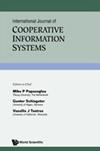基于k近邻的图像数据鱼类分类
IF 0.5
4区 计算机科学
Q4 COMPUTER SCIENCE, INFORMATION SYSTEMS
International Journal of Cooperative Information Systems
Pub Date : 2021-05-29
DOI:10.29040/IJCIS.V2I2.33
引用次数: 2
摘要
抽象——分类是一种技术,我们中的许多人在日常生活中,遇到分类科学也越来越多被应用到各种类型的数据和情况下在日常生活中,在计算机科学分类了人类工作,促进其应用的一个例子是将世界鱼类,鱼类的数量非常之多,以至于世界上仍有许多人有时困惑来区分他们,因此本研究将采用k -最近邻法对鱼类进行分类研究,共4种鱼类,所有数据共计160条数据。本研究的目的是测试基于颜色、纹理和形状特征对鱼类进行分类的k近邻方法。根据测试结果,使用K = 7的值获得真值的准确度值,其真值的百分比为77.50%,第二高的准确度值为K = 10的值,即76.88%。根据本研究的结果,可以得出结论,k -最近邻方法具有足够好的分类能力,但可以通过增加变量或增加更多的数据量,以及使用其他类型的鱼来实现。本文章由计算机程序翻译,如有差异,请以英文原文为准。
Classification of Fish Species with Image Data Using K-Nearest Neighbor
Abstract — Classification is a technique that many of us encounter in everyday life, classification science is also growing and being applied to various types of data and cases in everyday life, in computer science classification has been developed to facilitate human work, one example of its application is to classify fish species in the world, the number of fish species in the world is very much so that there are still many people who are sometimes confused to distinguish them, therefore in this study a study will be conducted to classify fish species using the K-Nearest Neighbor Method. 4 types of fish, all data totaling 160 data. The purpose of this study was to test the K-Nearest Neighbor method for classifying fish species based on color, texture, and shape features. Based on the test results, the accuracy value of the truth is obtained using the value of K = 7 with a percentage of the truth of 77.50%, the second-highest accuracy value is the value of K = 10, namely 76.88%. Based on the results of this study, it can be concluded that the K-Nearest Neighbor method has a good enough ability to classify, but it can be done by adding variables or adding more amount of data, and using other types of fish.
求助全文
通过发布文献求助,成功后即可免费获取论文全文。
去求助
来源期刊

International Journal of Cooperative Information Systems
工程技术-计算机:信息系统
CiteScore
2.30
自引率
0.00%
发文量
8
审稿时长
>12 weeks
期刊介绍:
The paradigm for the next generation of information systems (ISs) will involve large numbers of ISs distributed over large, complex computer/communication networks. Such ISs will manage or have access to large amounts of information and computing services and will interoperate as required. These support individual or collaborative human work. Communication among component systems will be done using protocols that range from conventional ones to those based on distributed AI. We call such next generation ISs Cooperative Information Systems (CIS).
The International Journal of Cooperative Information Systems (IJCIS) addresses the intricacies of cooperative work in the framework of distributed interoperable information systems. It provides a forum for the presentation and dissemination of research covering all aspects of CIS design, requirements, functionality, implementation, deployment, and evolution.
 求助内容:
求助内容: 应助结果提醒方式:
应助结果提醒方式:


